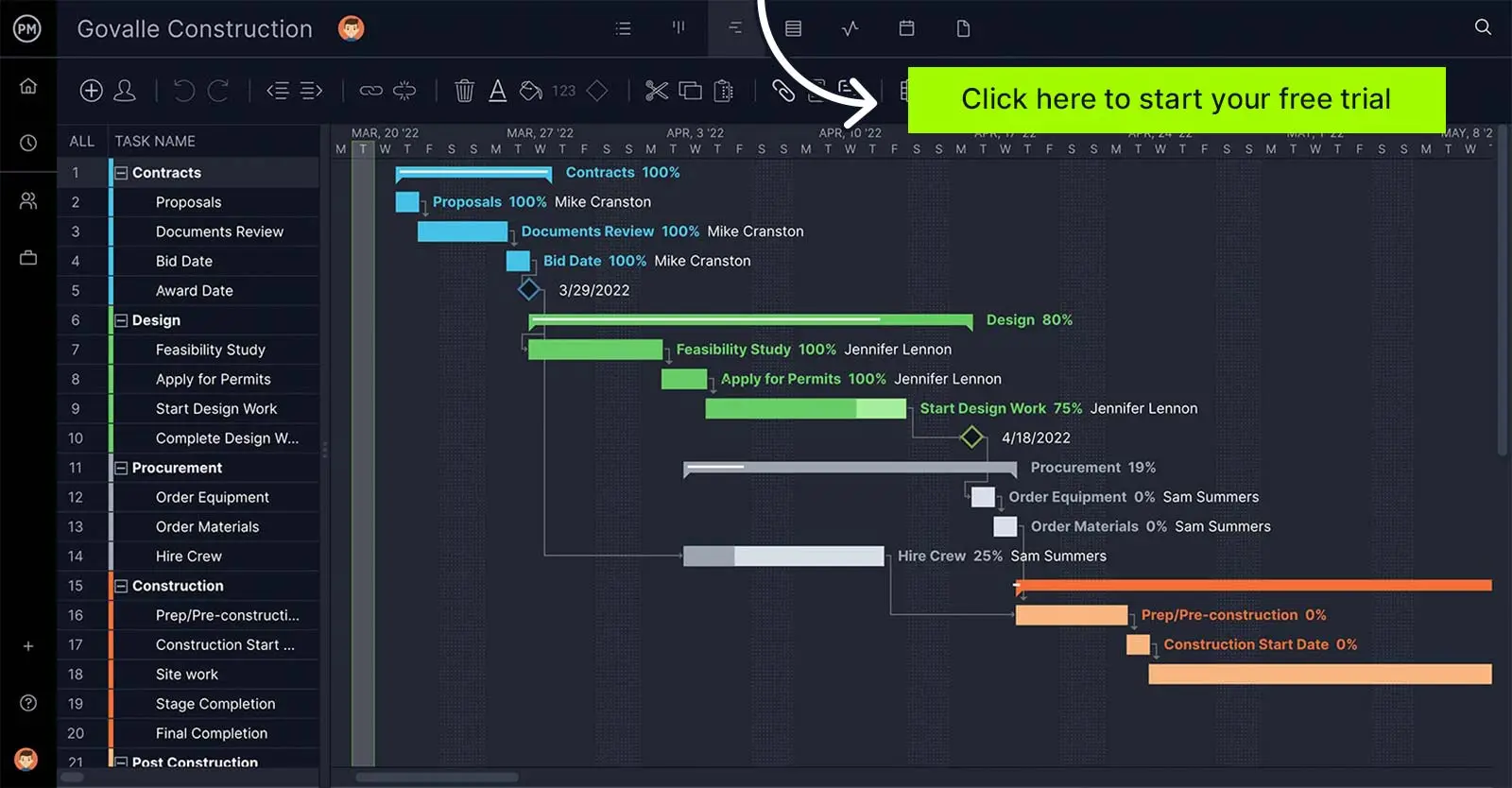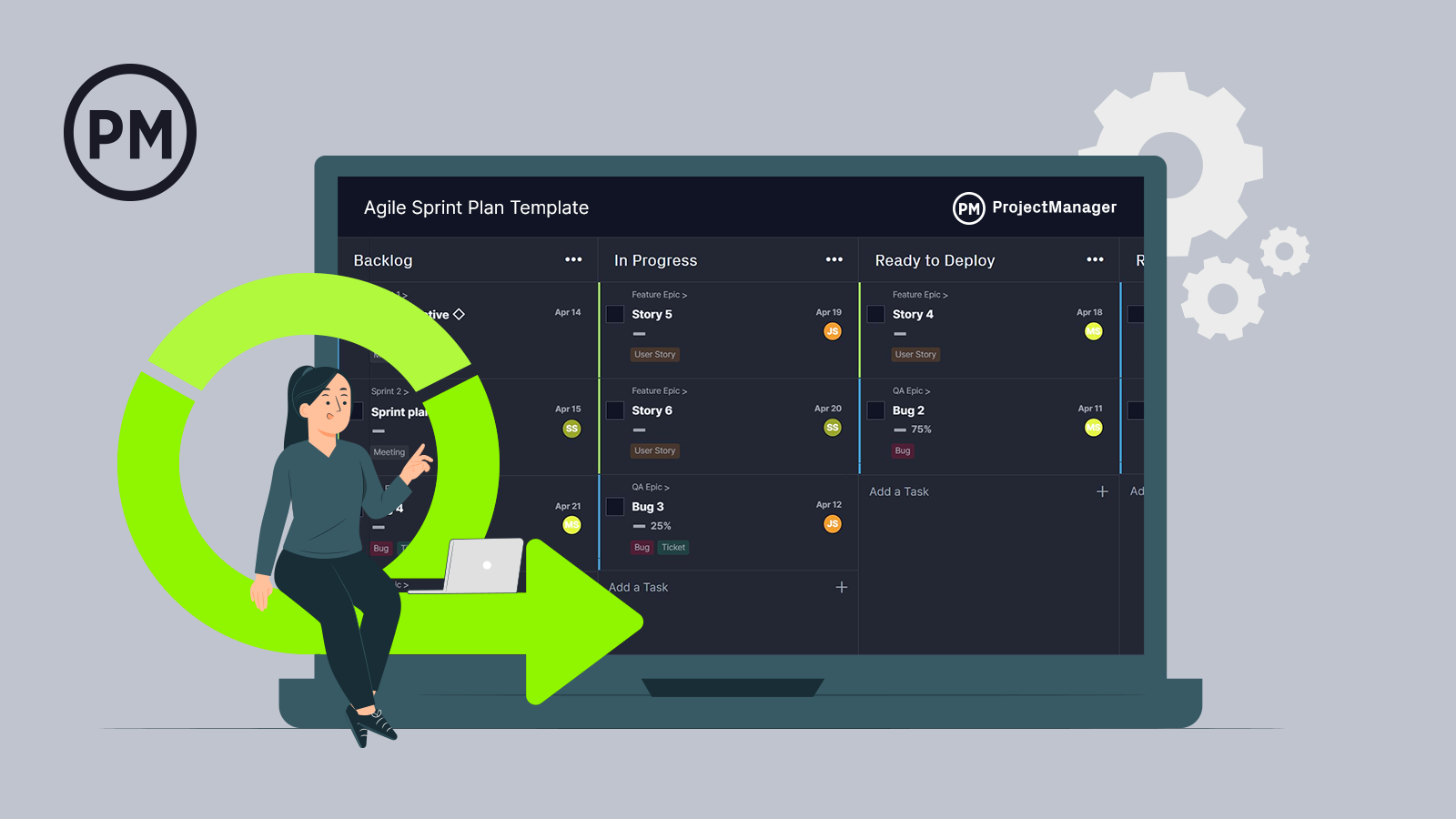There are many ways to approach a project. Over the years, people have developed different project management styles or methodologies. They all work towards controlling the constraints of time, cost, scope and quality only coming at it from different perspectives.
Common Project Management Styles
We’ve whittled down the many different project management styles and settled on what are the most common. These popular approaches to project management all have their Pros and Cons, which we highlight, so you can decide which is the best common project management style for your project.
Whichever project management style you choose, project management software will be an essential tool for planning, managing and tracking the project. ProjectManager is award-winning project management software with the flexibility to work with traditional and more iterative approaches. Our multiple project views include powerful Gantt charts, kanban boards, task lists and more. Get started with ProjectManager today for free.

1. Waterfall Project Management
This traditional project management style is defined by five stages—requirements, design, implementation, verification and maintenance. Each phase must be delivered before the next can start. Waterfall projects are planned in advance and are very structured. This project management style works best with projects in which the end result is clearly defined prior to starting and requires a lot of predictability.
Pros
- Clear, define steps
- End goal is defined at the beginning of the project
- Emphasizes a clean transfer of information
Cons
- Changes to the project are difficult to make
- Internal process with little focus on end-user
- Testing doesn’t occur until the project is done
2. Agile Project Management
On the other end of the project management style spectrum is agile. It’s an iterative process that embraces collaboration, and adaptability to change and uses self-organizing teams. Some don’t refer to agile as a project management style as much as a mindset to face uncertainty, give possible solutions a chance, get feedback and always adjust accordingly.
Pros
- The highest priority is to satisfy the customer
- Open to change throughout the project
- Focus on technical excellence and good design
Cons
- Not as predictable as other project management styles
- Requires more time and commitment
- Easy for projects to fall off track

Get your free
Agile Sprint Plan Template
Use this free Agile Sprint Plan Template to manage your projects better.
Get the Template
3. Scrum
Scrum is a project management style or framework that is used in an agile environment. It prioritizes iterative and incremental product delivery and seeks feedback and collaboration from project decision-makers. Like agile, scrum works in sprints, which are short periods of time, no more than two weeks, that are focused on a specific set of requirements or user stories.
Pros
- Creates project deliverables quickly and efficiently
- Divides large projects into easily manageable sprints
- Great for fast-moving projects
Cons
- Can lead to scope creep or adding more requirements
- Not ideal for large teams
- Daily scrum or meetings can sometimes frustrate team
4. Kanban
The kanban project management style is similar to scrum in that it also breaks down work into small tasks on a visual board, which mimics the production cycle moving from left to right, or start to finish. Kanban cards detail the tasks and they move from one column to the next until done. Kanban’s principles are to visualize work, limit the work in progress (WIP), focus on flow and continuously improve.
Pros
- Provides clarity for what needs to be done
- Gives managers visibility into the status of the work
- Visualizes workflow, sets clear priorities and spots bottlenecks
Cons
- Time estimates can be difficult without other tools
- Not ideal for larger projects
- The board must be up to date to be effective
5. Lean Project Management
As a project management style, lean falls under the agile umbrella. It focuses on identifying value, mapping the value stream, creating flow, establishing pull and seeking perfection. It was developed by Toyota in the 1980s to reduce waste in their production line.
Pros
- Keeps teams focused
- Team works only on tasks where there’s a demand
- Adds value to the customer
Cons
- Requires a lot of planning and time upfront
- Often doesn’t align with the organization’s larger strategy
- Requires full buy-in from the team
Project Manager Leadership Styles
What is the project manager’s role and which management styles suit that role best? Jennifer Bridges, PMP, shows you in this short tutorial video.
There are many management styles by which a project manager can lead a project. Jennifer looked at those that are most appropriate through the lens of what that project manager’s role in the project might be.
There are six project management styles that Jennifer identified in the video. She used Daniel Goleman’s book, Emotional Intelligence, as a guide. While there are likely many more styles, and hybrids of two or more of these, the half-dozen listed below are fundamental:
- Authoritative: This type has a vision and shares it. They are knowledgeable and collaborative, encouraging people’s strengths.
- Coercive: While this sounds negative, it’s a great style for junior teams, as it provides strong guidance.
- Democratic: Managers of this style offer little to no guidance. They foster self-directed teams and usually have high employee morale.
- All for one & one for all: These managers are more apt to let you work at your own pace and facilitate a creative environment, balancing life and work. They tend to skew on the younger side.
- Pace-setter: They expect high standards from those they lead and themselves. If you’re not up to snuff, they will get rid of you.
- The team leader: They are strong coaches, who are patient and offer encouragement to their team.
That’s a lot of styles. Which is right for you? Well, first Jennifer suggested you consider the project and then select the style most effective for that situation.
But what is your style, and can you just change your style like you do your clothes? Yes and no. Jennifer says first take an assessment test, like those online, to see what type of personality you are. Then work with a coach, get training and experience. One style might fit best, but you could learn from them all.
The Project Manager Role
Jennifer began by broadly defining the role of the project manager as one who plans and directs work for a group. They are also responsible for monitoring the project’s progress and taking corrective action when needed.
A senior project manager is a person who directs the work of a group, which includes other managers and project managers. They work on higher levels of planning strategies or help to roll out those strategic plans.
Project Types
Next, Jennifer looked at the variety of projects that exist. There are many, and they can range from technical to creative, simple to complex.
Where the project manager meets the project is at functionality. Functionally, the project manager must be able to create a solution, execute a plan with project management tools, build a team and manage a crisis.
A project manager is going to have a style of thinking as they tackle these tasks. It starts with some questions, such as: “How should this problem be approached,” and, “What’s the best way to manage this person or these people?
Managing Team Members
Like project managers, team members have different ways of doing things. Some are commanding, intense and have hardcore personalities. Others are more detailed, compliant problem-solvers. Still others can be team-oriented people. A manager must know how to work with all of them.
So, there are many types of projects and many styles of thinking, but no one style fits all. Therefore, the key to managing successfully is flexibility.
Thanks for watching!

